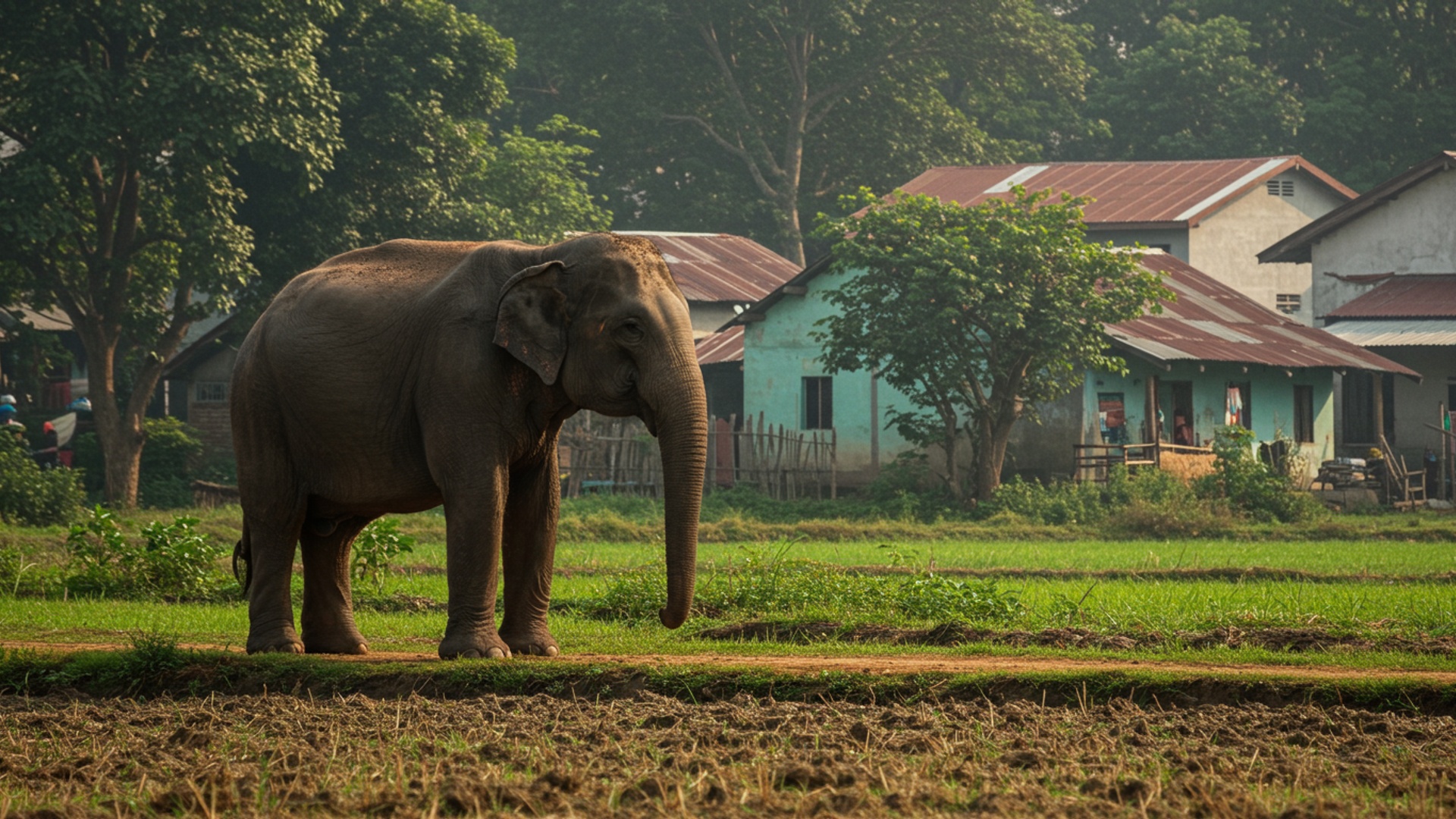Elephant-Human Conflict: 97 Deaths in Karnataka A deadly crisis grips Karnataka as elephant-human conflict escalates, claiming the lives of 97 people. This alarming toll highlights a deepening struggle where wild elephants increasingly enter human areas, driven by shrinking natural homes and the hunt for food. Across the state, communities live in fear as these powerful animals cause destruction and pose a constant threat to homes and farms. The rising number of deaths makes clear the urgent need for new ways to keep both people and elephants safe from harm.
Rising Concerns Over Deaths
The ongoing conflict between elephants and people in Karnataka has led to a worrying increase in human deaths. Reports indicate that these encounters have resulted in a significant number of fatalities, with a reported 97 human lives lost. Broader data from the state’s Forest, Ecology. Environment Department shows that 148 people were killed in such incidents over a five-year period, from April 2018 to September 2023. This number includes 13 deaths between April 2018 and March 2019, rising to 30 in 2019-20, 26 in 2020-21, 28 in 2021-22, 30 in 2022-23. 21 between April and September 3, 2023. Another report indicates 160 deaths due to elephant attacks in Karnataka in the last five years. These figures highlight the serious and growing nature of this problem.
Understanding the Reasons Behind the Conflict
The main reason for the increasing conflict is the shrinking natural living areas for elephants. Forest lands are being used for growing food, building roads, mining. other industries. This leads to forest areas being broken up into smaller pieces, forcing elephants out of their natural homes in search of food and water. Elephants, large animals that need a lot of space to find food, are pushed into areas where people live and farm. One key factor is that elephants are drawn to farm crops because these crops offer more food value than what they find in the forests. Farmers have also changed how they grow crops, shifting from seasonal crops to crops that grow all year, which further attracts elephants. Also, less rain in some areas means less food and water inside the forests, making animals venture out more often. The spread of foreign plants like lantana and eupatorium in forests also reduces the amount of natural food available for elephants.
“Forest area is diminishing while the number of wild animals is going up, leading to a higher number of conflict cases. Below average rainfall has led to lesser availability of food and water inside the forest, leading to more animals venturing out.”
Areas Most Affected
The problem of human-elephant conflict is seen in several districts across Karnataka. Some of the most affected areas include Hassan, Chikkamagaluru, Dakshina Kannada, Shivamogga, Mysuru, Kodagu, Chamarajanagar. Ramanagara. Hassan district, particularly its hilly parts, has seen many incidents. Over the past 21 years, 72 people have died in elephant encounters in Hassan. 23 people have been hurt in the last five years. Local people in affected towns like Sakleshpur, Alur. Belur often report elephants coming into their farms, destroying crops like plantains. even damaging homes. Chamarajanagar district also had a high number of deaths, with 24 fatalities over four years.
Steps Taken to Reduce Conflict
The government and forest department are working on several ways to lower the number of conflicts.
- Physical Barriers: One common approach is building barriers to stop elephants from entering human settlements. This includes building railway barricades, trenches. installing solar fences. Karnataka plans to build an additional 300 kilometers of railway barricades, a project that will cost 500 crore rupees and take two years to complete. About 312 kilometers of railway barricades already exist in Karnataka. The forest department has also installed 3,807 kilometers of tentacle fencing and 2,711 kilometers of elephant trench. But, elephants sometimes find ways around these barriers. poor upkeep can also make them less effective.
- Rapid Response Teams: Special teams are in place to quickly respond when elephants are spotted near human areas. These Rapid Response Teams (RRTs) try to guide elephants back into the forests.
- Elephant Task Force: An Elephant Task Force has been set up, for example, in Hassan district, to manage the issue. These teams are equipped to calm elephants and have trained staff to handle elephants in human living areas.
- Technology Use: The Forest Department is using technology to track elephant movements. This includes fitting elephants with GPS collars and using drones with thermal cameras to keep an eye on them and warn nearby villagers.
- Research and Planning: The Karnataka Forest Department has signed an agreement with the Indian Institute of Science (IISc) for a five-year project. This project aims to find scientific ways to reduce conflict and help elephants live long-term. It involves mapping elephant paths, checking how well barriers work. developing sound-based warning systems. They also aim to create a ten-year management plan based on this research.
- Community Involvement: Efforts are being made to hold village-level meetings and train farm workers on how to act when they see elephants to avoid conflicts.
Voices from the Ground
Forest officials acknowledge the difficulties. Forest Minister Eshwar Khandre has highlighted that many elephants are living outside forest areas, even in coffee farms, which leads to loss of human lives. He also noted that forest areas are shrinking. the number of wild animals is increasing, causing more conflict. Farmers, who often face the direct impact, report significant crop losses. In 2016, the government paid 4. 85 crore rupees as compensation to farmers for crop losses caused by elephants. Despite this, farmers are often unwilling to change their crop choices because these crops are crucial for their income. Wildlife experts and researchers point to habitat fragmentation as the main cause of these negative interactions. They suggest that instead of trying to fence elephants into forests, it might be better to fence elephants out of human settlements and farms. They also emphasize the need for careful land use planning and encouraging farming practices that would not attract elephants. Some experts say that there is a lack of tolerance towards elephants. true coexistence is the only lasting solution. The overall opinion from some officials is that despite all efforts, the conflicts seem to be increasing.
Looking Ahead
The challenge of human-elephant conflict is complex, with many factors contributing to its rise. The state continues to invest in measures like physical barriers and advanced tracking technologies, while also seeking scientific guidance for long-term solutions. The focus remains on finding ways for people and elephants to live together, reducing the harm to both sides. The efforts involve not only the forest department but also researchers, local communities. affected farmers, all working towards a common goal of safer shared landscapes. ![]()


















